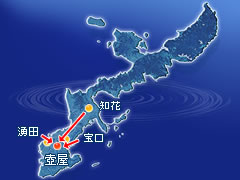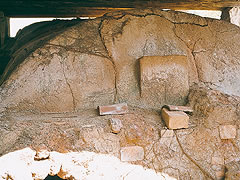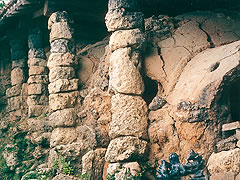 | Integration into Tsuboya

According to a historical document, "Kyuyo", Ryukyu Dynasty integrated Chibana, Wakuta, and Takaraguchi kilns at Tsuboya in 1682. This is the roots of present Okinawa pottery. |
 | Export of Tsuboya-yaki

In the era of Ryukyu Dynasty, Tsuboya-yaki was highly esteemed as offerings to Shogun's government. Potters served the dynasty and some were promoted to warrior class for their achievements. |
 | Fenu-kiln 
Nobori-gama for baking Ara-yachi, which exists in Tsuboya. There are no partitions in the kiln and it is like a tunnel from bottom hearth to top smoke flue.
|
 | Agarinu-kiln

Nobori-gama for baking Jo-yachi, which exists in Tsuboya. There are 9 Fukuro (chambers), and each Fukuro was used jointly. |